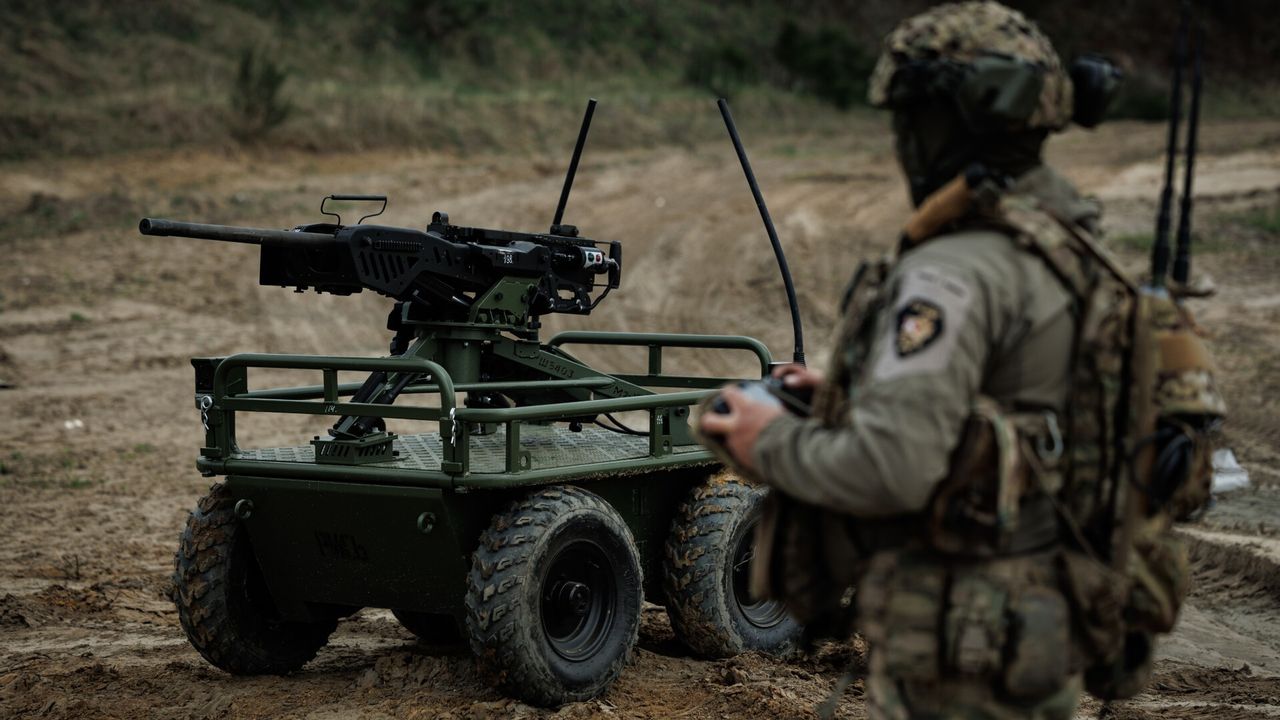The bandwidth limitations of SpaceX’s Starlink internet are hindering Ukraine’s ability to effectively operate ground robots in the ongoing conflict with Russia. As a result, Ukrainian tech innovators are seeking alternative solutions to enhance the performance of unmanned ground vehicles (UGVs) deployed on the frontline.
Over the past year, Ukraine has integrated thousands of wheeled ground robots into its military strategy. These robots assist in delivering supplies, evacuating injured personnel, and, in some instances, engaging Russian troops without risking Ukrainian soldiers’ lives. However, the bandwidth provided by Starlink satellites restricts individual terminals mounted on these UGVs to as little as 10 megabits per second. This significantly impacts the video feed quality, which is essential for real-time control.
“If you want to drive fast, you need a frame rate of at least 30 frames per second to be able to control the robot,” stated Vadym Burukin, technologist and CEO of drone start-up Huless. He highlighted that a lower frame rate leads to increased risks, such as driving into a minefield or colliding with obstacles.
Since the war’s early days, Starlink’s internet service has been vital for Ukraine, connecting troops and enabling remote guidance of drones and UGVs in areas where traditional radio links are ineffective. According to sources linked to the Ukrainian Ministry of Defense, approximately 200,000 Starlink terminals are currently operational in Ukraine, making it the largest user of Starlink services in Europe.
Despite the extensive use of Starlink, the high number of connected devices, particularly along the frontlines, limits the operational speed of the robots to around 6 miles per hour (10 kilometers per hour). This sluggish pace necessitates up to two hours for UGVs to traverse the 12-mile-wide (20-kilometer) grey zone, where they are exposed to threats from Russian first-person-view (FPV) drones. “It’s quite slow for unmanned ground vehicles,” said Andriy Dovbenko, CEO of the Ukrainian Tech Exchange network. “You want to have at least 20 kilometers per hour (24 miles).”
The mechanical vibrations of the UGVs also pose a challenge, often causing Starlink terminals to malfunction. Additional environmental factors, such as clouds and rain, can further compromise signal quality. To address these challenges, Ukrainian innovators are exploring alternative technologies that can support faster UGV operations while minimizing exposure to enemy fire.
One innovative solution involves the development of tethered drones capable of ascending 500 feet (150 meters) to carry signal repeaters. These devices amplify weak radio signals, extending their reach significantly. “For ground-to-ground communication, the radio signal range is just a couple of kilometers,” explained Burukin. “With a repeater in the air, this range extends to over 40 kilometers (25 miles).” This enhancement allows Ukrainian forces to conduct missions deeper into Russian-held territory without losing connectivity.
Recently, Burukin noted that their team successfully operated drones as far as Donetsk’s central arena, a location held by Russian separatists since 2014, demonstrating the effective reach of their technology.
While Starlink remains a crucial asset for Ukraine, Dovbenko emphasizes its limitations. “There are many uses for Starlink in the war, but it hasn’t been developed specifically as a military technology, so it has its limitations,” he remarked. “It would be beneficial to have alternatives, but can we really produce an alternative to Starlink at scale? Probably not.”
In addition to exploring new communication technologies, Ukrainian developers are also implementing AI-powered autonomous navigation systems. These systems help mitigate the effects of signal jamming and other disruptions. Over the next few years, Ukrainian innovators anticipate that AI will increasingly facilitate frontline operations, enabling autonomous machines to function without real-time human oversight, thereby enhancing resilience against radio jamming and signal loss.
While fully autonomous combat robots may not entirely replace human soldiers, they are expected to reduce the number of personnel required in the most hazardous frontline situations, thereby improving overall mission success rates and soldier safety.






